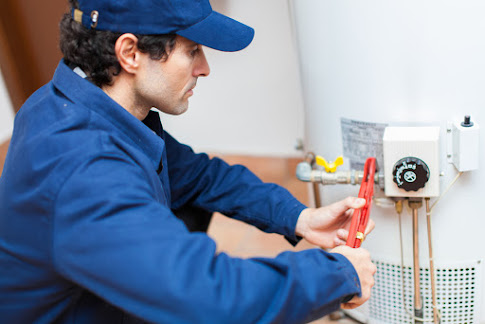6 Ways to detect the slab leaks
The slab refers to the concrete foundation of your home in the plumbing and home services industries. For detecting any leak in your slab you can go for Slab Leak Detection Santa Ana. Your home's water lines are located beneath this concrete slab. A change in your foundation (perhaps caused by an earthquake or other disaster), improper placement or installation, or ordinary corrosion can all cause leaks in these water lines. Due to the fact that slab leaks can happen on either the drainage or pressure side of your foundation, you might notice one on either side of your property. Slab leaks on the pressure side can typically be repaired quite rapidly, however they can still result in significant damage.
On the other side, drainage leaks are more difficult to spot but over time can wreak havoc on your home, possibly even resulting in the collapse of your foundation. Despite the fact that slab leaks are harder to find than other kinds of plumbing leaks, there are symptoms you may look out for. It's wise for homeowners to be aware of the signs of a slab leak. The sooner you can hire a qualified plumber, the less likely it is that your house will sustain significant damage.

Warm floors.
Because there is no insulation in the carpet, it is simpler to tell if your flooring is hot if they are made of wood or tile. In the event of a hot water slab leak, the concrete and tiles are heated by the water's temperature. Therefore, if you're in your kitchen barefoot and feel a hot spot, it's not because your flooring has suddenly been heated. You most likely have a slab leak issue if there are cool tiles only a few feet from the heated tiles.
The hot water heater is always on.
If your water heater seems to be running nonstop, it is another red flag that you may have a hot water slab leak. You have a continual flow of hot water coming out and a steady flow of cold water coming in, which is causing this. To meet demand, the hot water heater must continuously heat the water. In an effort to meet the rising demand, the hot water heater must continuously heat the water.
Higher water bills
You could occasionally discover that your water bill has gone up without warning. If your rate of usage is constant but your water bills suddenly jump, you should look into it further because it might be a slab leak. The majority of leaks happen inside the slabs, making them challenging to spot with the unaided eye. A rising water bill either indicates that you are using more water or that your home has a leak. So that you can detect even tiny changes in the water bill, you must continuously monitor the amount of water you use each month.
You hear noises of running water.
Another way to find a slab leak is to just listen with your ears. You may occasionally hear the sounds of running water under the flooring if there is a water leak below the foundation. To locate the leak precisely, you might require the professional plumber.
There are puddles of water on the home's exterior.
Take a deeper look if you see water puddles along the side of the home that aren't the consequence of water hoses or a dog's water bowl. There's a chance that the cracks beneath the surface of your home are where the water leaks are coming from.
Low Water Pressure
Water leaks, defective valves, a buildup of minerals in the pipes, and debris in the water are some typical causes of low water pressure. If all other potential causes are ruled out, a slab leak is most likely to blame for the low water pressure. Find all of your home's water points to find the precise source of low water pressure. Find the low-pressure areas by running the water. Determine the characteristics of any sites where there is low pressure. For instance, check to see if the location is close to a slab. The presence of a slab close to the low-pressure water outlets may indicate an under slab leak.
There are destructive and non-destructive ways for Slab Leak Detection Santa Ana. Tools that cause destruction include drills and shovels. Electromagnetic amplifiers and electromagnetic pipe locators are examples of non-destructive tools. However, the cost of non-destructive tools is higher than the cost of destructive ones. The decision is based on your financial capacity and the outcomes you seek.
Author Bio:- Jacqueline Lewis
Jacqueline is a content marketing manager who formerly worked at Cali's Choice Plumbing & Restoration. She is a writer, editor, and content strategist for plumbing services. Making her knowledge and skills a power, she amplifies the readers’ knowledge about the ways of water leak and slab leak detection and their reciprocation. Jacqueline is a content marketing manager who formerly worked at Cali's Choice Plumbing & Restoration. She is a writer, editor, and content strategist for plumbing services. Making her knowledge and skills a power, she amplifies the readers’ knowledge about the ways of water leak and slab leak detection and their reciprocation.
Through her articles, she shares the most successful tactics and strategies of slab leak repair, mitigating blockages through Hydro Jetting, and AC & heater installation tips to the audience.
FaceBook: https://www.facebook.com/CalisChoicePlumbingRestoration
Twitter: https://twitter.com/CalisChoice
.jpg)



Comments
Post a Comment